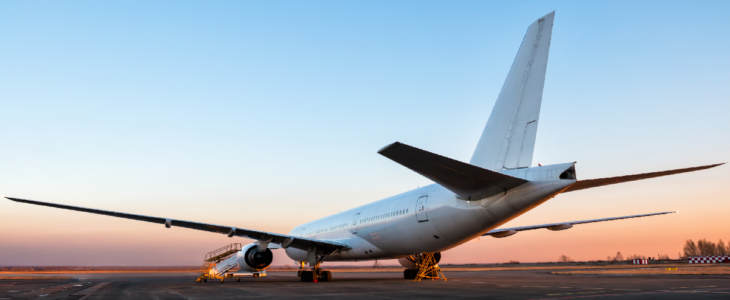Aviation accidents can happen with all types of aircraft, including everything from helicopters to commercial planes to small planes and charter planes. For those with a fear of flying, such knowledge can be unsettling. However, these accidents occur for numerous reasons and under a variety of circumstances. If you or a loved one has been injured in an aviation accident, it’s crucial that you understand your legal rights and options. Don’t wait; contact Pringle & Herigstad today to ensure you get the justice and compensation you deserve.
How Are Aviation Accidents Caused?
Aviation accidents are caused by a wide range of things, but some of the most common causes of aviation accidents include:
- Maintenance errors: To be safely operated, proper maintenance of any aircraft is critical. Unfortunately, proper maintenance falls by the wayside sometimes. This is particularly true when airlines outsource maintenance to third parties in order to try and keep costs down. The trade-off for saving money is commonly the safety of crew and passengers.
- Design defects: These are defects in the aircraft’s design that render it dangerous. A design defect is when the aircraft or aircraft component has been properly made according to design specifications, but the flaw lies in the design itself. Design defects can render an aircraft unsafe and lead to accidents.
- Manufacturing defects: Other times, the aircraft and its components are properly designed, but there is a manufacturing error which renders it dangerous.
When Pilot Errors Lead to Aviation Accidents
There are many aviation accidents that are also caused by flight crew negligence and it will likely come as no surprise that pilot error is also a leading cause of aviation accidents.
In some cases, the lack of proper training of the pilot is the cause, and other times the flight crew has skipped critical safety checks. Pilot errors leading to aviation accidents have included:
- Errors in navigation
- Improper aircraft equipment use
- Failure to properly monitor flight speed, altitude, and other flight parameters
- Failure to properly communicate with air traffic control
- Failure to properly monitor and manage fuel levels
- Failure to comply with safety checklist procedures
Considering the wide range of reasons why aviation accident occurs, it lends itself to the reason that there are also a number of potentially liable parties for aviation accidents. Depending on the cause of the accident, the airline or aviation companies may carry all or at least part of the responsibility for the aviation accident. Other times, the airport may be held liable for the accident. In some cases, the manufacturer or designer of the aircraft or aircraft component may be responsible.
In any case, the party or parties found negligent and, thus, responsible for the accident can be on the hook for paying significant damage awards. After all, injuries and other losses from an aviation accident can be tragic with fatalities not being uncommon in these scenarios.
Common Injuries in Aviation Accidents
When an aviation accident occurs, the nature of the injuries can be incredibly severe, given the high speeds and altitudes involved, as well as the size and weight of the aircraft. Some of the most common injuries in aviation accidents include:
- Traumatic Brain Injuries (TBIs): These can range from mild concussions to severe brain injuries. TBIs can occur if passengers or crew are jolted violently, hit by falling luggage, or in the unfortunate event of a crash.
- Burn Injuries: Fires can break out during aviation accidents, particularly in cases of fuel leaks or engine malfunctions. These can lead to severe burns, requiring extensive medical treatment.
- Spinal Cord Injuries: The impact of an accident can severely damage the spinal cord, which might result in partial or complete paralysis.
- Fractures and Broken Bones: This is common in aviation accidents, especially in limbs, ribs, and the facial area due to the force of impact or debris.
- Lacerations and Abrasions: Flying debris or shattered glass can cause deep cuts and wounds.
- Whiplash and Neck Injuries: The sudden force from an abrupt stop or change in direction during an accident can cause whiplash or other neck injuries.
- Internal Injuries: These can be harder to detect immediately but can result from the force of the crash, causing internal bleeding or damage to internal organs.
- Post-Traumatic Stress Disorder (PTSD): Survivors of aviation accidents may also suffer from psychological trauma, experiencing flashbacks, nightmares, or severe anxiety.
- Loss of Limbs: In severe cases, an accident can result in amputation or the loss of limbs either due to the initial injury or as a medical intervention to save the victim’s life.
- Smoke Inhalation: If there’s a fire onboard, passengers and crew may suffer from smoke inhalation, which can lead to respiratory problems or can be fatal.
Given the severe nature of these injuries, the medical expenses, loss of income, and pain and suffering can be enormous. This underscores the importance of having skilled legal representation when pursuing claims related to aviation accidents. The attorneys at Pringle & Herigstad understand the complexities of aviation-related injuries and are equipped to navigate the legal nuances to ensure victims receive the compensation they deserve.
Contact Our North Dakota Aviation Accident Lawyers Today
Navigating the ins and outs of a personal injury claim resulting from an aviation accident merits retaining legal counsel who is proficient and experienced in handling these types of legal actions. You can count on Pringle & Herigstad to provide you with dedicated legal counsel you can depend on. Contact us today.
Pringle & Herigstad, P.C. is committed to supporting individuals in North Dakota, including Grand Forks, Minot, Fargo, Bismarck, Williston, Rugby, Devils Lake, Jamestown, and the surrounding areas. Our dedicated team is here to provide legal assistance and guidance to those facing the complex challenges that arise from these incidents.
